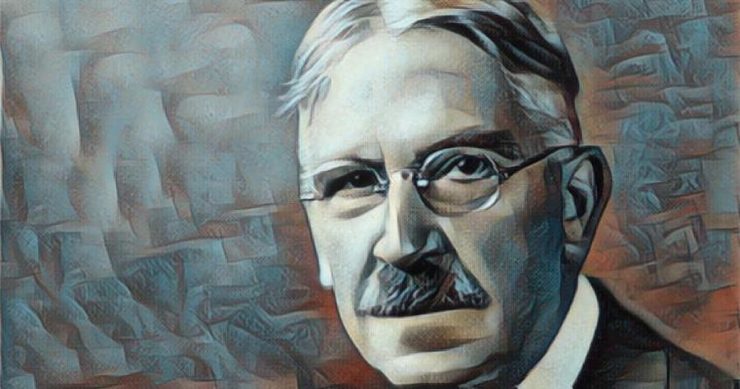John Dewey—an American philosopher, psychologist, and educational reformer, intends his philosophy to be a philosophy of experience. The most central topic of Dewey’s philosophy is continuity and discontinuity of experience. (Bertram Morris, 1971).
Dewey distinguishes between Experience and an experience. Experience is “the result, the sign, and the reward of that interaction of organism and environment…”., while an experience is “a whole and carries with it its own individualizing quality and self-sufficiency” (Dewey, 1934). Dewey’s aesthetic aims to discern how Experience related to an experience in the work of art. (Bertram Morris, 1971).
In this section, I expound on several essential points of Dewey’s Aesthetic in his book Art as Experience.
1.Dewey insists that the sources of works of art are everyday life experiences. “The work of art is what the product does with and in experience” (Dewey, 1934). The primary task of the philosophy of art is to “restore continuity between the refined and intensified forms of experience that are works of art and the everyday events, doings, and sufferings…”. (Dewey, 1934).
To understand the aesthetic, someone has to begin with ‘the raw’. He finds the raw in “the events and scenes that hold the attentive eye and ear of man… the sights that hold the crowd—the fire engine rushing by; the machines excavating enormous holes in the earth”, and so on. (Dewey, 1934).
Humans find art in experience by learning everyday activities, such as “seeing how the tense grace of the ball-player infects the on-looking crowd; watching the darting flames and crumbling coals”, etc. (Dewey, 1934). The segregation between art and everyday life happens because of the rise of the compartmental conception of fine art, for example, in museums and galleries.
The growth of capitalism also has powerful influences on the development of the museum, which promotes the segregation of art from common life. (Dewey, 1934).
What is everyday life or normal experience? According to Dewey, “the nature of experience is determined by the essential conditions of life”. Humans basic vital needs are the same as animals’, such as breathing, moving, looking, and listening. (Dewey, 1934). Based on these biologically common elements, “humans reach to the roots of the aesthetic in experience”. (Dewey, 1934).

2. Dewey rejects the presupposed view, which holds that nature and spirit are separated. The dualism of nature and spirit occurs because of the disorganization in institutional life. This disorder “takes the form of static division into classes, and this static separation is accepted as not to generate open conflict”. (Dewey, 1934). The economic and legal conditions caused these separations. “We undergo sensations as mechanical stimuli” (Dewey, 1934). Body, sense, and flesh ‘get a bad name’. (Dewey, 1934).
In Dewey’s thought, sense covers “the sensory, the sensational, the sensitive, the sensible, and the sentimental, along with the sensuous”. (Dewey, 1934). The sense organs are carried to their full realization through the meaning that is embodied in experience. Meaning cannot be separated from action, will, or thought. “Experience is the result, the sign, and the reward of the interaction of organism and environment”, and “when it is carried to the full”, it transforms interaction into participation and communication. (Dewey, 1934).
To be continued in Part 2.
